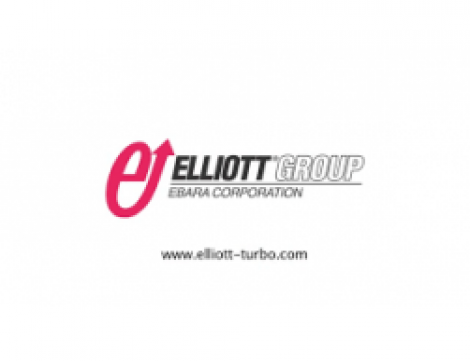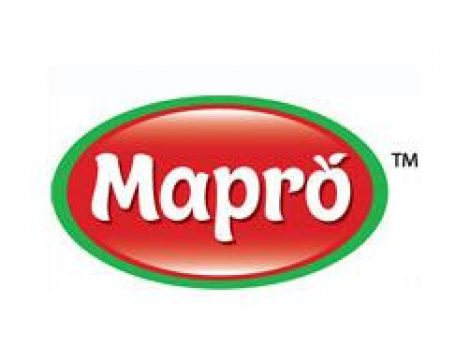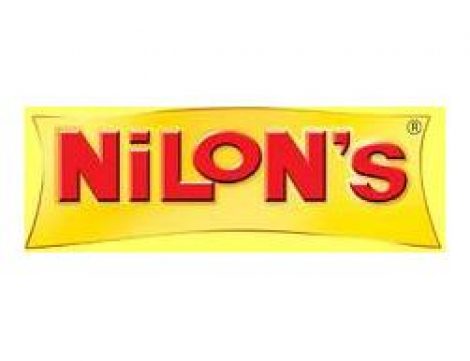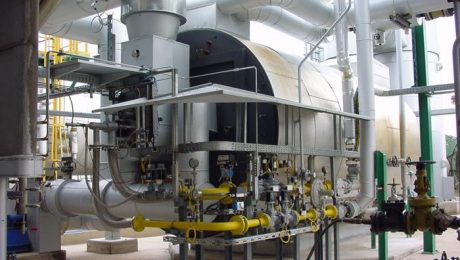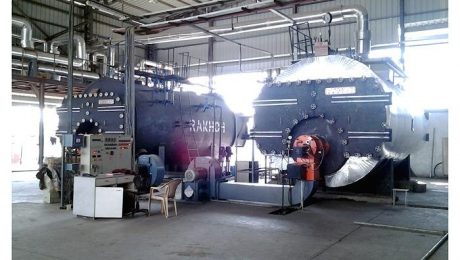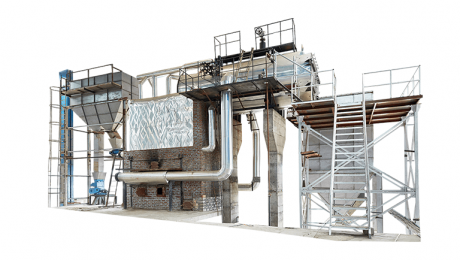- Home
- About Us
- Products
- EPC projects
- Technology
- Services
- Clients
- Media
- Blog
VIEW ALL -
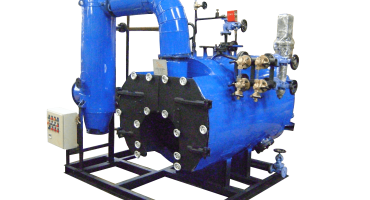 19 July 2023 by bullweb, in Boiler
19 July 2023 by bullweb, in BoilerA Guide to Boiler Maintenance in Chemical Processing Plant
Steam boiler systems are irreplaceable in the chemical process industries. Among...READ MORE +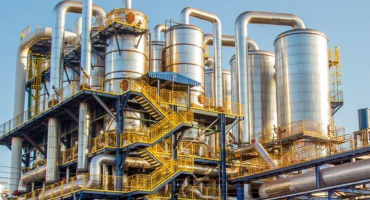 19 October 2022 by bullweb, in Steam Boiler,Steam Jackets
19 October 2022 by bullweb, in Steam Boiler,Steam JacketsSteam Jackets in Boilers | Definition, Types, and Applications
Steam is integral to meet various process operational requirements in manufactur...READ MORE +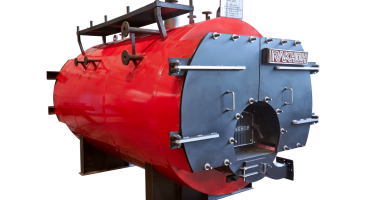 17 October 2022 by bullweb, in Boiler,Steam Boiler
17 October 2022 by bullweb, in Boiler,Steam BoilerSigns that indicate replacement for steam boilers
Steam boilers are vital equipment for steam generation in the process and manufa...READ MORE +
- Careers
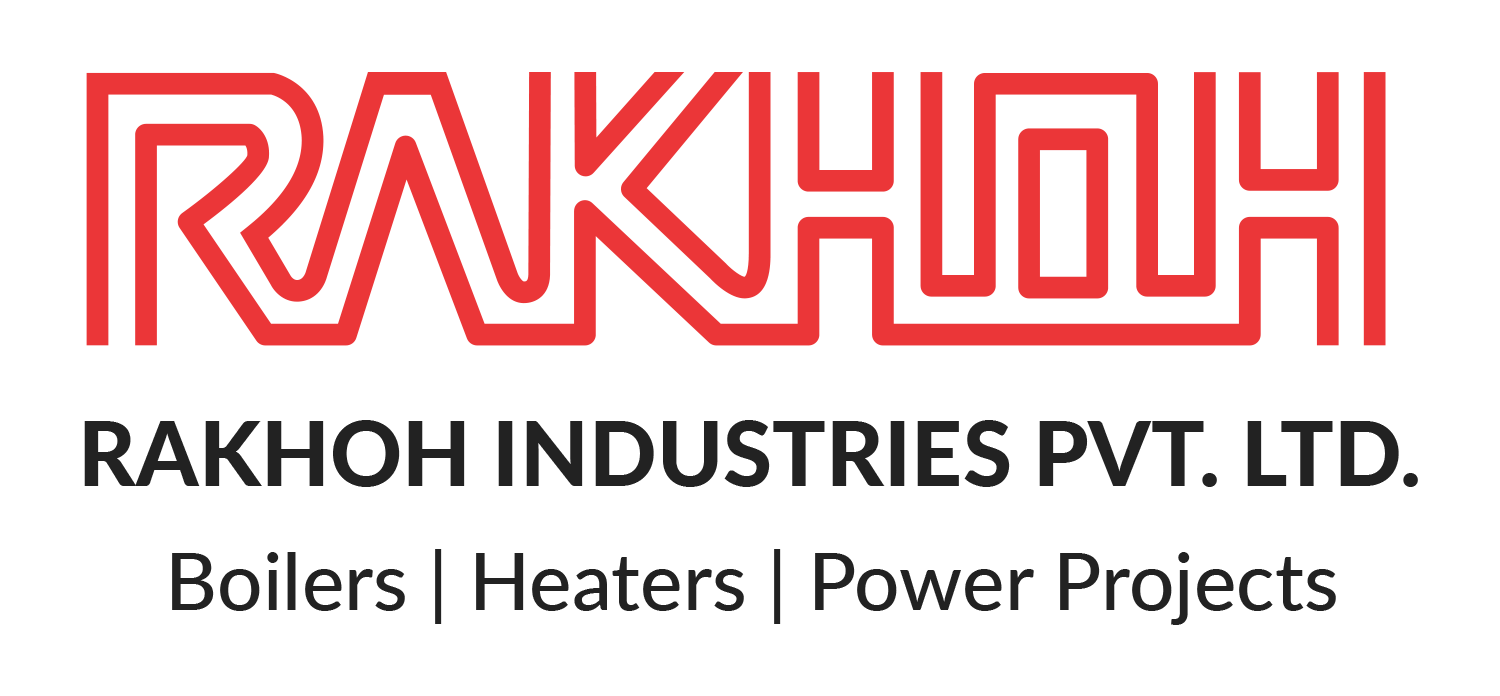
BOILER ACCESSORIES, THERMIC FLUID HEATERS & SPECIALTY FABRICATION.
+9120 - 66308333
Email: enquiry@rakhoh.com
RAKHOH BOILERS
S-11, T Block, M.I.D.C.,Bhosari, PUNE - 411 026. Maharashtra, India
BLOG & STORIES
Steam Boilers are of utmost importance in the process and manufacturing sector to ensure high-quality production or power generation through steam. Therefore, the steam produced in the boiler must be of superior quality. Various parameters are considered to ensure seamless operations of the steam boiler. Steam leakage is a phenomenon that causes loss and inefficiency in the boiler system. Steam is a high-value commodity and leads to a higher value with higher pressure. Therefore, it is necessary to take action to repair steam leaks as soon as they occur. Steam leaks can immensely affect production, cause safety issues, and increase maintenance costs.
An Overview of Steam Leakage in Boiler:
After a few years of operation, steam boilers tend to leak steam due to outdated gaskets, fittings, and other areas. Without proper maintenance and regular inspection, the number of leaks and the volume of leaked steam only increase tremendously.
The most common locations of finding steam leaks are:
Steam leaks from valves and steam traps are further classified into external leaks, such as those from gland packing, and internal leaks that cause steam escaping through the seat and into the outlet. In addition to higher energy costs, steam leaks waste boiler water and chemicals that can prove hazardous to the operating staff and the boiler system.
One pound of 100 psi steam consists of about 1,200 BTU. Considering the steam is produced at 85% efficiency, the input energy is 1,200 / 85% = 1,411 BTUs per pound. Therefore, 1,000 pounds of steam requires at least 1.4 million BTU for its production.
The amount of steam leaked from a steam trap in a normal operation depends on the type of trap. Similarly, in the case of a steam trap, the steam leaking from even one failed trap can result in a significant financial loss.
Preventing Steam Leaks in Boiler:
Prevention of Steam Leakage Due to Pipe Fittings:
The primary causes of steam leakage from the pipe and screwed connectors are:
Stress from pipes expanding or contracting due to the heat of the steam
Threaded components that have loosened due to that stress, and
Deterioration of gaskets.
The nuts and bolts of the fitting can be loosened as pipes contract due to the reducing steam temperature. It consequently results in causing a gap to open up between the two pipes for releasing the steam.
If the operating personnel detects a steam leak, it requires more than the tightening of the screws on the fitting or replacement of the gaskets. It is essential to examine the cause of the leak and accordingly change the location of fixed pipe supports or add expansion joints. If prompt measures such as these are overlooked, the steam leak may occur again in the future.
Prevention of Steam Leakage Due to Valves:
The majority of external leaks from valves emerge from gland packing. Due to the design of the valve, gland leaks can be avoided temporarily by tightening the valve.
However, when the valve is opened and closed frequently, it may cause leaking again within a short period. A bellows seal valve is preferable in such situations as it is highly resistant to gland leakage due to their bellows that closes off the interior and exterior gland packing.
Interior leakage occurs when steam is released through the valve seat and flows through the outlet as the valve is in the closed position. Interior leakages are not visible from the outside, and therefore, are difficult to spot. Detecting interior leaks requires maintenance tools such as a stethoscope or a device that measures ultrasonic vibrations.
Steam leakages are common from the seat of valves with both adjustable valve openings. It can be prevented by using adjustable and closable valves that eliminate the need for dual-function valves. On the other hand, another effective method of preventing internal leaks is installing a separator that removes the condensate entrained within the steam. The introduction of dry steam prevents the valve seat from deteriorating.
Prevention of Steam Leakage Due to Steam Trap:
Leaks take place when the device stops functioning properly in valves and pipe fittings, but for steam traps, it is also important to consider the loss of steam that occurs during operation.
Steps to Reduce Steam Leaks in Boiler:
Practice a regular maintenance schedule on the steam trap. Track the checks and maintenance to find problems before it becomes challenging.
Conclusion:
Rakhoh Boilers provides efficient industrial steam boilers and the best thermal solutions since their inception in 1983 as boiler manufacturers in Pune. We have successfully installed 3000+ boilers in over 26 countries worldwide for 20 process industries.
For more details on our products and services, visit www.rakhoh.com
Steam Boilers are essential for operational processes in manufacturing industries. If left neglected, boiler issues can hinder the seamless operation. One such boiler issue is soot formation. Soot is a carbon-based material that accumulates as a byproduct of combustion and sticks to the walls and surfaces of the steam boiler system during operation. Soot is a natural insulator that makes it challenging for conducting heat efficiently. As a result, it reduces the steam boiler efficiency by blocking some heat from passing through the system. Additionally, soot can lead to fires and damage the boiler system if not cleaned properly.
What Are Soot Blowers?
A soot blower is boiler equipment for eliminating the soot deposits within the steam boiler to keep it running safely and seamlessly. Different soot blowers are used in the different components of the industrial boiler, each with unique advantages. The two major mediums for removing soot are compressed air and steam, with steam being more preferred as it has a lower cost than the expense required for compressors, motors, and control of air systems. Once the soot is removed, it is passed through the system by flue gas and leads to a dust collector or expelled through the smokestack.
Problems Caused By Soot Formation:
When a steam boiler or furnace is operating for a long period, it causes more deposits on all its heating surfaces. Soot in a furnace or other burning equipment lowers efficiency and may also lead to fire hazards. Firstly, a soot coating in the boiler system acts as an insulator that reduces heat exchange, and thus more energy is required for achieving optimum temperature. Secondly, excessive soot can catch fire, resulting in risk or damage to the equipment, surrounding area, and personnel.
Types of Soot Blowers:
Wall Soot Blowers:
A wall soot blower is one of the basic types of soot blowers. It is a small piece of equipment that is connected to the exterior of the boiler. A short nozzle that enters the steam boiler releases hot steam or compressed air for cleaning the surrounding area. The nozzle retracts while not operating, making the wall blower an ideal choice for areas that face the issue of high temperatures.
There are various pros and cons of wall soot blowers due to their basic design. The primary advantage is that wall blowers are often smaller in size, taking less space in the area around the steam boiler. Consequently, the disadvantage is that the wall soot blower is capable of cleaning only a small section. Most industrial boilers require several wall blowers and may use other types of soot blowers to clean the accumulated soot.
Air Heater Soot Blowers:
Air heater soot blowers are ideal for cleaning the air heaters of the boiler system. As time passes, the moisture starts accumulating at the cold end of the air heater as the flue gas temperature reduces to below the condensation point. The moisture combines with soot and other byproducts and forms a fine-grain deposit.
Air heater soot blowers are installed on the cold end of the air heater and include retractable blowers or blowers with nozzles on swinging arms. The device moves across the air heater, while the swinging arm moves in an arc across the face of the heat transfer surface, cleaning a sufficient area.
Long Retractable Soot Blowers:
A long retractable soot blower extends a long lance or nozzle into the boiler. The long retractable soot blower begins at the start of the steam boiler and gradually moves through it, rotating 360 degrees to eliminate soot from every surface. The primary advantage of the application is that a single device is capable of cleaning a much larger area than a wall blower. Covering a large area reduces the total number of blowers necessary to remove soot in your boiler, simplifying the system. However, a long retractable soot blower needs to store the long lance and usually takes up considerably more space than a wall blower.
Rotary Soot Blowers:
A rotary soot blower is fixed to the steam boiler system and does not retract like other types of blowers. On the contrary, the blowing tube or element of the blower remains in the steam boiler at all times. The tube is usually equipped with several nozzles and rotates to clean a large portion of the boiler system.
As it does not retract, rotary soot blowers are not to be used in the high-temperature areas of the boiler. Rotary soot blowers are best suited for the superheater, economizer, and air heater.
Applications of Soot Blowers:
Soot Blowers Safeguards Furnace Tubes and Shells
A soot blower reduces the possibility of soot fire. Such accidents can lead to the appearance of hotspots in the furnace tubes that can later reach a temperature to weaken the structure of the tubes. The dangers of a weakened furnace structure are extreme.
Soot Blowers Enhances Operational Efficiency
Soot is a heat insulator. Therefore, more soot inside equipment leads to more energy required to get the equipment up to optimal operating temperature. As no processing plant aims to waste energy, it is too expensive.
Fuels used for combustion in steam boilers lead to various by-products coating the heating surfaces. It is accumulated on walls, screens, reheaters, etc., and every component is plastered with soot reducing energy efficiency. A soot blower is crucial for maintaining efficiency.
Conclusion:
Rakhoh Boilers is one of the trusted boiler manufacturers in Pune since 1983. With 39+ years of experience and expertise in thermal solutions, we deliver highly efficient and reliable industrial steam boilers, waste heat recovery systems, thermic fluid heaters, and boiler accessories to over 20 process industries in 27 countries worldwide. We provide excellent boiler services to boost the efficiency and productivity of the boilers.
Visit www.rakhoh.com for more details on our products and services
Steam boilers, as we are aware, are an integral part of any process and manufacturing industry. However, after a few years down the road, the boiler systems start deteriorating and require expert attention. In such cases, it is prudent to consult a trusted boiler services technician or boiler manufacturers to decide on the best course of action. However, if there is no previous knowledge of boilers, working with a boiler technician can be a challenge. It can be difficult to determine the level of expertise or thoroughness of the technician. Regardless of how much you are aware or not aware of the boiler and the service it requires, there are certain criteria of every great boiler technician and boiler manufacturer that need to be fulfilled.
As one of the leading boiler manufacturers in India, Rakhoh has listed some of the essential qualities to look out for in boiler services technicians and boiler manufacturers.
Essential Qualities of Boiler Service Technician:
With our teams of factory-trained, highly-skilled technicians, Rakhoh adopts the most advanced technology to maintain, service, update, repair, and replace a vast range of equipment
Fully prepared before starting with the boiler issue:
Preparation is a vital stage in boiler services and helps a proficient boiler technician to work quickly and efficiently so that time is not wasted.
Examine the boiler room to fully understand the issue:
It is important to have a clear picture of everything that could be probably wrong with the boiler, so an experienced technician will assess and take a look around the boiler room to ensure that nothing is being overlooked.
They are willing to share their knowledge after identifying the problem:
The best boiler service technicians are proficient in their field and happy to share their knowledge about the issue with the boiler system. Most importantly, they share their knowledge in an informative way to help the customer understand the cause and solution of the problem clearly.
They remain on-site to assure the services take place properly:
A professional boiler service technician is committed to ensuring that the job is well done, and that means staying on-site until it is assured that the work conducted was successful.
Clear communication:
Regardless of understanding or not understanding exactly how your boiler technician is resolving the issue, communication needs to be open and clear about the happenings with the boiler and how it is being solved.
They leave no stone unturned in resolving the problem quickly and professionally:
An expert boiler service technician starts immediately with their business. Once they have identified and explained the problem, they get to the work of fixing the boiler as quickly as possible without wasting time.
Regular follow-up to be updated about the boiler’s condition:
Professional boiler service technicians reach out to clients after a short period to ensure that the repairs are leading to seamless operations and that the clients are satisfied with the work. At Rakhoh, we consider it the foundation of a great working relationship with our extensive clientele.
Essential Qualities of Boiler Manufacturers:
Rakhoh, as one of the trusted boiler manufacturers, prides itself on its expert knowledge and unparalleled ability to deliver fast, efficient, and effective solutions.
Years in the Business:
Similar to any other service provider, tenure is an important sign to determine the suitability of the boiler manufacturers. In other words, a boiler company that has been a reputed name in the business for an extended period would have been trusted by others for one or several reasons. In most cases, these reasons involve providing highly-effective and reliable solutions, resulting in the creation of a solidly loyal customer base.
Team of Skilled, Trained, and Certified Technicians:
Boilers and boiler equipment are complex and technical devices. While there are various similarities between different boiler types, each manufacturer’s equipment consists of certain nuances and preferences. As a result, it is necessary to select a boiler manufacturer and service provider who is properly trained to administer solutions for the boiler and the equipment.
Contracts for Maintenance:
Even though the boiler system is crucial, it is important to schedule regular maintenance and inspections before it stops working or begins to malfunction. Therefore, it is important to choose a boiler manufacturer and service provider that offer service contracts. It can help to assure that the equipment is properly serviced and maintained according to the intervals suggested by boiler manufacturers.
Networking of the Boiler Maintenance and Service Provider:
A reliable boiler manufacturer and service provider is always a part of the network. Any leading provider works closely with several boilers and auxiliary equipment manufacturers to make sure that they are using the latest and most effective tools and techniques based on factory specifications.
Rakhoh for reliable boiler services:
Since its formation in 1983, Rakhoh Boilers strives to enhance and improve the safety of the boiler operations by manufacturing and installing steam boilers of the highest quality to ensure the safety of the process plants and prevent any fatal accidents or injuries to the staff working and operating the plant. As one of the reputed boiler manufacturers, we have successfully installed 3000+ boilers in over 27 countries worldwide.
Learn more about our products and services by visiting www.rakhoh.com
Thermic fluid heaters are gaining popularity in large industries due to their improved temperature control and reliability. Although steam boilers are still a vital asset for the manufacturing and process industries, thermic fluid heaters are slowly but surely emerging as preferred equipment. It offers enhanced performance, high temperature at low pressure, low maintenance, low operational cost, and minimal downtime. However, similar to steam boiler problems, thermic fluid heaters too face their share of issues that should be promptly addressed. Regular checking and maintenance of the equipment is the key to several issues. Some of the commonly found issues in thermic fluid heaters are as follows,
Problems during operations:
In the operation of a thermic fluid heater, the system provides radiant and convective heat to the heater tubing placed in the firebox. It is transferred to the film layer of the fluid through the tube wall. The fluid is in a turbulent state that causes the film layer to mix with the fluid and transfer the heat quickly. The high flow by the circulating pumps leads to swift transport of the heat by the fluid that returns at a lesser temperature to carry more heat.
At normal operations, the refractory and structural metal temperature is equal to the flame itself. After shutting down thermic fluid heaters, the heat in these components requires more time to radiate and exit the stack entirely. If the heater consists of excess refractory parts, it would require more time in radiating the excessive stored heat.
The fluid circulating after the shutting down of the heater carries the heat and distributes it to the entire system.
Boiling Point of Fluids:
The heat transfer fluids possess various boiling points, with larger molecules boiling at high temperature and smaller molecules at low temperature. The natural convection currents continue to flow in the firebox even after the flame is turned off. It causes the internal temperature to remain sufficiently heated for the mid-sized and smaller molecules of the fluid to vaporize. With smaller molecules boiled, the remaining large molecules continue to exist. The higher percentage of molecules reflects the higher viscosity of the heat transfer fluid.
As the liquid becomes thicker, it is hindered in flowing quickly through the thermic fluid heater and requires more horsepower for obtaining the flow. The slow-flowing fluids continuing to remain in contact with the heating surface results in reducing the system performance and overheating and damaging the thermic fluid system.
When the flow is reduced, it leads to increasing the temperature of the fluid’s film layer. It causes fluid degradation, and gradually, fouling of the thermic fluid heater with deposits and sludge.
Improper Shutdown:
When the thermic fluid heater is shut down entirely, the heater does not fire and the pump stops circulating the fluid. It results in transferring the stored heat in refractory and structural metal parts to the firebox. The heat does not exit the stack immediately after turning off the blower that causes extreme heat in the heater tubing that consists of heat transfer fluid.
Power Failures:
In case of power failure, it must be ensured to tie in the blower and circulating pump of the thermic fluid heater while using emergency power. Emergency power hook-up is cost-effective as compared to the expense of thermic fluid heater replacement.
Maintenance of Thermic Fluid Heaters:
Like every other industrial equipment, a thermic fluid heater needs regular maintenance and servicing for hassle-free performance. Factors that must be taken into account for efficient operations are:
Inspecting Insulation:
Proper insulation is vital for effective operations in thermic fluid heaters. It is essential to check that the heater insulation is in place and acceptable conditions.
Assessment of Piping:
A thermic fluid heater consists of multiple piping in it. Therefore, it is necessary to check the piping for any leakages, weak spots, or other flaws requiring repair or replacement.
Annual Inspection:
It is imperative to inspect the thermic fluid system annually under the guidance of a boiler manufacturer or professional to ensure its proper functioning. It is advisable to inspect and tune the burners for efficient performance.
Smooth functioning and preventing any mishaps are the primary concerns of every plant manager. To attain such goals, it is necessary to check the thermic fluid system by regular maintenance and repairing. In severe damage or issues, seek a professional boiler manufacturer for assistance and advice if a thermic fluid heater might be a better alternative than reparation.
Since its inception in 1983, Rakhoh Boilers have emerged as a leading boiler manufacturer and thermal solution provider. We manufacture a range of efficient industrial steam boilers, waste heat recovery systems, thermic fluid heaters, and boiler accessories. With over 3000+ successful boiler installations globally and our remarkable services, we have carved our reputation as a trusted boiler supplier.
To learn more about our products and services, visit our website www.rakhoh.com
